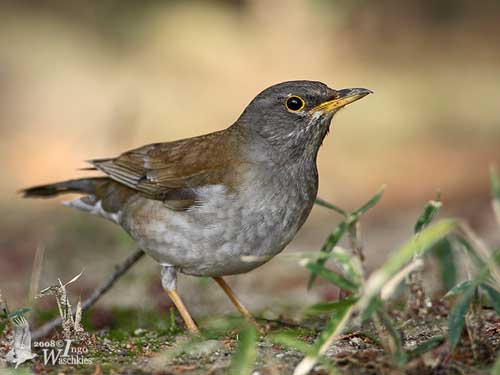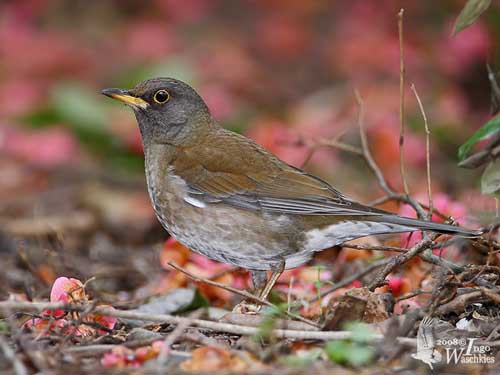
Fr: Merle pale
All : Fahldrossel
Esp : Zorzal Pálido
Ital : Tordo pallido
Nd: Bleke Lijster
Sd: Amurtrast
Russe : Бледный дрозд
Photographer:
Ingo Waschkies
Bird Photography
Text by Nicole Bouglouan
Sources:
HANDBOOK OF THE BIRDS OF THE WORLD Vol 10 by Josep del Hoyo-Andrew Elliott-David Christie - Lynx Edicions - ISBN: 8487334725
THRUSHES by Peter Clement and Ren Hathway – HELM - ISBN: 0713639407
BirdLife International (BirdLife International)
Wikipedia, the free encyclopaedia
Pale Thrush
Turdus pallidus
Passeriforme Order – Turdidae Family
BIOMETRICS:
Length: 23 cm
Weight: 64-90 g
DESCRIPTION:
The Pale Thrush from E Asia belongs to the family Turdidae. This species is very typical of the genus Turdus, and shows pale but warm-coloured plumage.
The adult male has pale brown upperparts with chestnut tinge. The primary flight feathers are greyish-brown. The outermost rectrices are tipped white.
On the underparts, breast and flanks are buffy-grey, whereas throat, belly, vent and undertail-coverts are creamy-white. The head is dull brownish-grey, extending to chin and throat.
The bill is dull yellow with dark grey upper mandible. The eyes are dark brown, surrounded by narrow yellow eye-ring. Legs and feet are dull yellowish to fleshy-brown.
We can often see a whitish submoustachial spot at bill base in both sexes.

The female is duller than male. She is paler brown. Head and face are greyish with olive tinge. Chin and central throat are white.
The juvenile has brown upperparts and pale orange underparts, with spotted and streaked plumage.
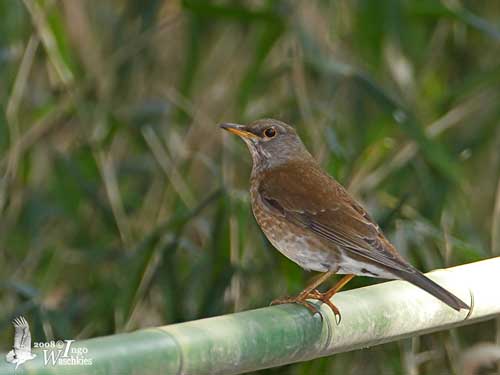
VOICE: SOUNDS BY XENO-CANTO
The Pale Thrush’s call is a dry, sharp “tuck-tuck” or “chuck-chuck”, usually uttered softly. In flight, it gives “tzeee” notes. When alarmed, it utters a long, thin “seee” followed by loud “quack quack” notes, similar to those given by the Blackbird.
The song is a series of long, repeated whistles, involving monotonous phrases “tuvee-tulee-tulee-tuvee” or “trrer-treer-trrer-trudle”.
The song is far-carrying and usually uttered from treetop, at dusk and dawn. Several birds may sing in chorus.
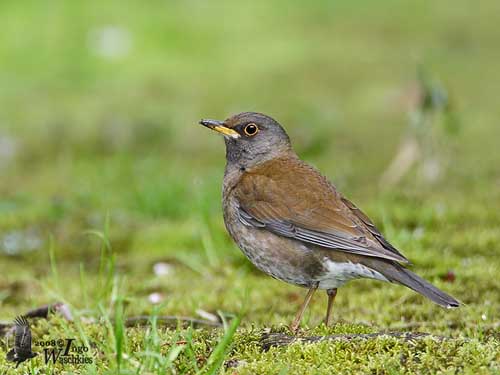
HABITAT:
The Pale Thrush occurs and breeds in montane pine and deciduous forests, woodlands, thickets, secondary vegetation and parks.
During the migration, it can be found among scrub in open woodland on hillsides, and mainly in berry-bearing bushes.
In winter, it occurs at lower level but frequents similar habitats, forest edges, orchards, parks and gardens in urban and suburban areas.
RANGE:
The Pale Thrush is found in SE Russia, NE China and Korea. It winters in S China, S Japan and Taiwan.
BEHAVIOUR:
The Pale Thrush feeds on insects, spiders and worms, and also takes fruits, berries and seeds. As numerous Turdidae species, it forages on the ground in leaf-litter, in low vegetation and bushes for berries. It stands upright on the ground and searches for preys as other thrushes.
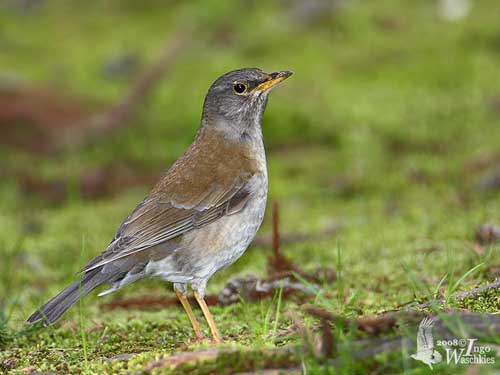
This species is usually shy during the breeding period. Mainly seen alone or in pairs, they gather in flocks when migrating. At this period, they feed together in wooded areas and fields.
The male gives its territorial song from an elevated perch. Courtship displays are poorly known, but probably resemble to those of other thrushes.
This species is migratory and leaves the breeding areas for moving southwards to reach the wintering grounds.
FLIGHT:
The Pale Thrush has direct, slightly undulating flight.
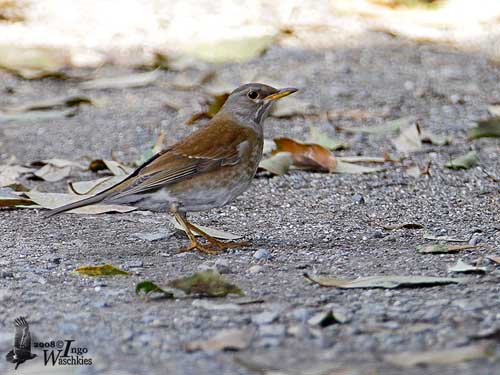
REPRODUCTION:
The breeding season occurs from May to August.
The Pale Thrush builds a cup-shaped nest in fork of small tree or bush, often near stream. The nest is made with grass, dry leaves and pine needles, rootlets and mud.
The female lays 4-6 pale greenish-blue eggs with dark markings. She incubates during 13-14 days. The chicks are fed by both adults and fledge about 13-15 days after hatching.
This species usually produces two broods.
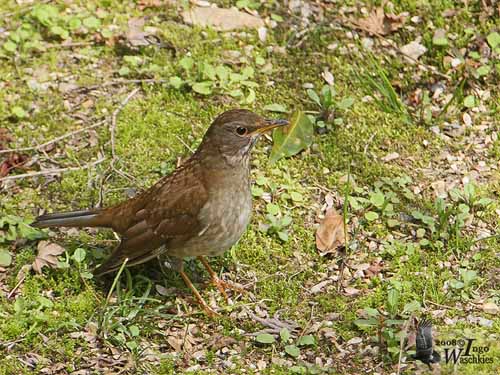
DIET:
The Pale Thrush feeds on insects, mainly coleopterans, and spiders, worms, fruits, berries and seeds.
It forages on the ground in typical thrush manner.
PROTECTION / THREATS / STATUS:
The Pale Thrush is locally common or scarce throughout the range. This species was formerly trapped for food until mid-20th century, involving reduction of populations.
But currently, the Pale Thrush is not threatened.
